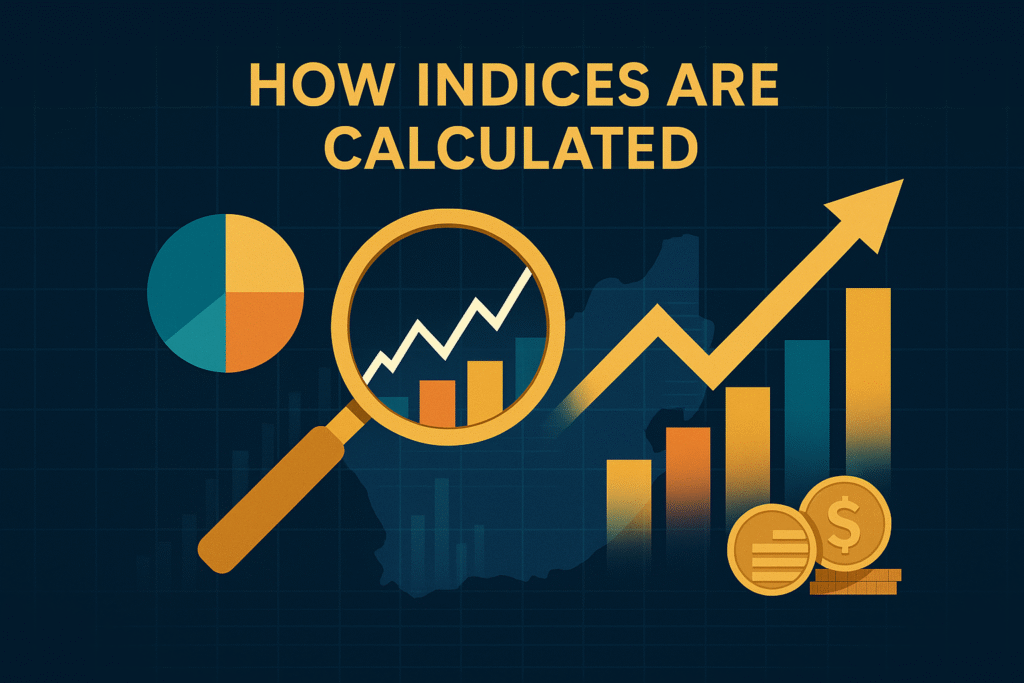Financial indices convert thousands of live prices into a single, continuously updated number. Understanding the math behind that headline figure clarifies why two benchmarks tracking the same market can behave so differently.

1. Start With a Universe
First, an index provider defines an eligible universe—for example, the 500 largest U.S. companies or every euro‑denominated sovereign bond with at least one year to maturity. Each security enters the index with an initial weight based on a chosen formula.
2. Common Weighting Schemes
| Method | Core Idea | Example |
|---|---|---|
| Price‑Weighted | Higher‑priced shares influence the index more | Nikkei 225, Dow Jones |
| Market‑Cap Weighted | Weight equals full market value | MSCI World, S&P 500 |
| Free‑Float Cap Weighted | Only tradable shares count | FTSE 100, MSCI EM |
| Equal‑Weighted | Every constituent starts at the same weight | S&P 500 Equal Weight |
| Factor or Liquidity Adjusted | Tilts toward momentum, value, or turnover | Smart‑beta indices |
Consequently, two indices can cover the identical universe yet diverge in performance because of their weighting logic.
3. The Divisor
Next, providers calculate an initial index value by dividing the sum of constituent weights by a divisor. The divisor is simply a scaling constant selected so that the index launches at a round number such as 100 or 1 000. Importantly, whenever a corporate action (stock split, spin‑off, special dividend) occurs, the divisor is adjusted so the index level remains unchanged at the instant of the event; therefore, price moves reflect economics rather than mechanics.
4. Price vs. Total‑Return Series
Although the headline index usually shows price change, many providers publish a total‑return version that reinvests dividends or coupon payments. As a result, the total‑return series more accurately reflects what investors earn when cash flows are reinvested.
5. Continuous Calculation Loop
Every few seconds—or in the case of bond indices, every few minutes—the system:
- Retrieves live prices for each constituent.
- Applies free‑float factors (if used) to adjust market caps.
- Sums adjusted values according to the weighting scheme.
- Divides by the updated divisor to generate the new index level.
Hence, any price update instantly ripples through to the index, keeping it current.
6. Rebalancing & Reconstitution
Providers also schedule periodic reviews (monthly, quarterly, semi‑annual):
- Rebalancing resets existing weights back to target.
- Reconstitution adds new securities and deletes those that no longer qualify.
These events ensure the index continues to mirror its stated market segment.
7. Corporate‑Action Adjustments
Finally, different corporate events trigger specific treatments:
| Event | Adjustment |
|---|---|
| Stock Split | Share count doubled; price halved; divisor cut to neutralize effect |
| Special Dividend | Divisor reduced on ex‑date to offset one‑time payout |
| Spin‑Off | Weight assigned to new entity; divisor tweak prevents price gap |
| Merger or Deletion | Removed security’s weight redistributed; divisor changed if weight not fully reassigned |
Through such adjustments, the index remains a pure price signal rather than a victim of accounting noise.
Key Takeaways
- Universe definition, weighting method and divisor maintenance together dictate index behavior.
- Divisor tweaks keep the level consistent during corporate events.
- Rebalances realign weights, while reconstitutions refresh membership, thereby preserving relevance.